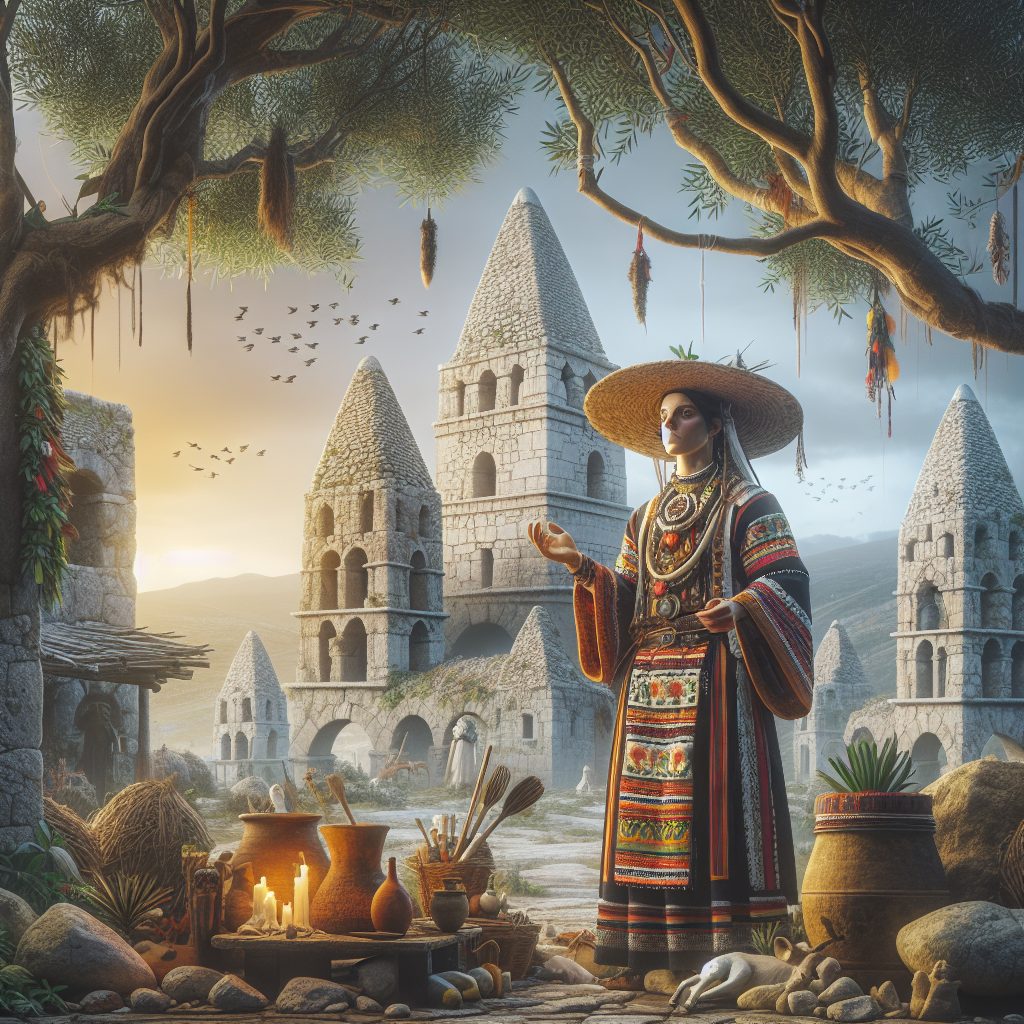Ancient traditions of Sardinia hold a captivating allure, deeply rooted in the rich history of this enchanting island located in the Mediterranean Sea. Defined by its unique culture and customs, Sardinia boasts one of the most distinctive and well-preserved ancient traditions in Italy.
One fascinating insight into the ancient traditions of Sardinia is its language, Sardinian, which is considered one of the oldest Romance languages still spoken today. With its distinct dialects, this language showcases the island’s rich cultural heritage and has been instrumental in preserving Sardinia’s ancient traditions throughout centuries. Moreover, the unique feature of Sardinia lies in the fact that it is home to numerous nuraghe, mysterious prehistoric stone structures scattered across the island dating back over 3,000 years. These nuraghe serve as a testament to the advanced architectural skills and sophisticated society that once inhabited Sardinia, offering a glimpse into the island’s ancient past.
Moving forward, this article will delve into the key takeaways of the ancient traditions of Sardinia, providing a deeper understanding of its vibrant culture, traditional festivities, and customary rituals. Exploring the themes of religious celebrations, folk music and dance, culinary delights, and artisanal crafts, we will uncover the invaluable heritage that has been seamlessly passed down through generations. Discover the ancient magic that continues to shape present-day Sardinian society, allowing you to immerse yourself in the captivating traditions of this Mediterranean gem.
Key Takeaways
1. Sardinia, an island in the Mediterranean, is home to various ancient traditions and cultural practices that have been passed down through generations. These traditions include unique festivals, music, and dance forms that showcase the deep-rooted history of the Sardinian people.
2. One of the most intriguing customs of Sardinia is the “Mamuthones” ritual, where participants dress in black sheepskin and wear formidable wooden masks. This ancient ritual is believed to date back thousands of years and is performed during the Carnival of Mamoiada to chase away evil spirits and bring good luck to the community.
3. Another notable tradition in Sardinia is the “Launeddas” music, which involves the use of a triple pipe instrument, played by skilled musicians. This haunting music has its origins in prehistoric times and is recognized as one of the oldest forms of music in Europe. The intricate melodies and rhythmic patterns of Launeddas continue to captivate both locals and visitors alike.
4. Sardinia is renowned for its exceptional pastoral farming practices, particularly the transhumance tradition known as “S’arrostumus.” This seasonal migration of livestock from the mountains to the plains allows the animals to graze on fresh pastures, contributing to the unique flavors of Sardinian cheese and meat products.
5. The ancient nuraghi, impressive megalithic structures scattered throughout Sardinia, are a testament to the island’s early inhabitants. These stone towers, often compared to beehives, were constructed during the Bronze Age and served as defensive structures or religious sites. They provide valuable insight into the island’s prehistoric past and are a significant tourist attraction today.
Ancient Traditions of Sardinia: Unveiling the Enigmatic Cultural Heritage
Discover the Age-Old Festivals and Rituals
Sardinia, the mesmerizing island nestled in the heart of the Mediterranean Sea, boasts a rich tapestry of ancient traditions that have stood the test of time. From vibrant festivals to elaborate rituals, the island offers a fascinating glimpse into its enigmatic cultural heritage. Explore the deep-rooted customs and practices that have shaped the identity of the Sardinian people for centuries.
1. Nuragic Civilization: Uncovering the Ancient Legacy
The Nuragic Civilization, dating back to the Bronze Age, left behind awe-inspiring archaeological treasures that reveal the island’s early inhabitants’ advanced craftsmanship. These prehistoric sites, such as the mesmerizing Nuraghe constructions, mysterious necropolises, and sacred wells, provide a captivating insight into the ancient Sardinian culture.
2. Traditional Crafts: From Handwoven Textiles to Ceramic Artistry
Sardinia is renowned for its exquisite traditional crafts, which have been passed down through generations. Take a journey into the intricate world of handwoven textiles, where skilled artisans meticulously create vibrant carpets, dazzling fabrics, and delicate embroideries, showcasing the island’s rich artistic legacy. Additionally, discover the mastery of Sardinian ceramics, characterized by intricate patterns and vibrant colors, adorning both functional and decorative pieces.
3. Music and Dance: The Rhythm of Sardinian Folklore
Immerse yourself in the authentic sounds and captivating movements of Sardinian music and dance. The island’s folk traditions echo through lively performances, where melodic instruments, such as the launeddas (a Sardinian triple pipe), tambourines, and guitars, merge with traditional dances like the intricate ballu tundu or the energetic su ballu e s’attu. Experience the pulsating heartbeat of Sardinian folklore.
4. Culinary Delights: A Gastronomic Journey Through Tradition
Sardinian cuisine is a delicious fusion of ancient flavors and contemporary influences. Indulge in traditional dishes that have stood the test of time, such as the hearty su porceddu (roasted suckling pig) or the savory malloreddus (Sardinian gnocchi). Taste the island’s unique cheeses, like pecorino sardo, and savor the exquisite local wines, immersing yourself in Sardinia’s culinary heritage.
5. Costume and Festivals: A Vibrant Display of Culture
The vibrant traditional costumes of Sardinia reflect the island’s diverse history and cultural richness. Each region boasts its distinctive garments, adorned with intricate embroidery, vibrant colors, and precious jewelry. Dive into the colorful world of Sardinian festivals, where ancient rituals and lively parades animate the streets, celebrating everything from religious events to agricultural bounties. Witness the captivating allure of the Carnival of Mamoiada or the evocative Holy Week processions.
6. Understanding Mythology: Gods, Giants, and Folklore
Sardinia’s ancient mythology unveils a captivating tapestry of gods, giants, and mythical beings. Delve into the legends of mighty Nuraghic heroes, such as Norax and Iola, and explore the enigmatic folklore associated with the island’s mysterious nuraghe towers. Discover the mystical realms of Sardinian mythology, where supernatural creatures like the benevolent Janas and the mischievous Mamuthones roam.
7.
Guides or Tips
Ready to immerse yourself in the wonders of Sardinia’s ancient traditions? Here are some practical tips to enhance your experience:
1. Plan your visit during traditional festivals to witness the customs and rituals firsthand.
2. Engage with the locals and participate in workshops or demonstrations to gain a deeper understanding of traditional crafts.
3. Sample the rich flavors of Sardinian cuisine by trying local specialties and regional delicacies.
4. Visit archaeological sites and museums to embark on a journey through the island’s ancient past.
5. Dive into Sardinia’s folklore by attending music and dance performances, and learn more about the meanings behind the traditions.
Unravel the captivating enigma of Sardinia’s ancient traditions and immerse yourself in a world of extraordinary cultural heritage.
FAQ – Ancient traditions of Sardinia
1. What are some prominent ancient traditions of Sardinia?
Sardinia boasts a rich cultural heritage with several fascinating ancient traditions. Some prominent ones include the traditional Sardinian music called “cantu a tenore,” the vibrant Sardinian folk dances like “ballu tundu,” and the ancient ritual of sheep shearing known as “la murra.”
2. How has the traditional Sardinian music evolved over time?
The traditional Sardinian music, cantu a tenore, has evolved organically over the centuries. Initially performed by shepherds in the rural areas of Sardinia, it involves four male singers producing harmonized vocal sounds without any instruments. Today, it has gained recognition as a UNESCO Intangible Cultural Heritage and has integrated and fused with contemporary music genres.
3. What is the significance of the Sardinian folk dance, ballu tundu?
The Sardinian folk dance, ballu tundu, holds great significance in the local culture. This energetic, circular dance involves couples holding hands and spinning around accompanied by lively music. It symbolizes joy, community unity, and celebration of life’s milestones, such as weddings and religious events.
4. How does the ancient ritual of sheep shearing called “la murra” take place?
La murra is an ancient Sardinian ritual where shepherds gather to shear their flocks in early summer. It involves skilled shearers using traditional tools to carefully remove the wool, followed by festivities, music, and traditional Sardinian feasts. This ritual serves as a recognition of the shepherds’ essential role in Sardinian society and the importance of sheep farming in the region.
5. Are the ancient traditions of Sardinia still practiced today?
Yes, many ancient traditions of Sardinia are still actively practiced today. The traditional music, dances, rituals, and festivals are cherished by the locals and are often performed during cultural events, festivals, and special occasions. These traditions serve as a way to preserve and showcase the unique cultural identity of the Sardinian people.
6. Can visitors participate in the traditional Sardinian rituals or dances?
Absolutely! Visitors are often welcomed to participate in the traditional Sardinian rituals and dances. The locals take pride in sharing their cultural heritage and are delighted to involve tourists in their festivities. It provides a unique opportunity for visitors to immerse themselves in the authentic and vibrant traditions of Sardinia.
7. Are there any specific etiquette or customs to be followed when participating in Sardinian traditions?
While participating in Sardinian traditions, it is important to respect the customs and etiquette of the locals. It is advisable to dress appropriately, be mindful of personal space, and follow the lead of the locals during dances or rituals. Additionally, learning a few basic phrases in the local Sardinian dialect can be a respectful gesture.
8. Where can one experience the ancient traditions of Sardinia?
One can experience the ancient traditions of Sardinia throughout the island. Several towns and villages host traditional festivals, music performances, and dance events that showcase the richness of Sardinian culture. Additionally, exploring local markets, crafts workshops, and small museums can provide insights into the ancient traditions of the region.
9. Are there any specific traditional foods associated with ancient Sardinian traditions?
Yes, there are certain traditional foods closely associated with ancient Sardinian traditions. Some examples include “porcheddu,” which is a suckling pig roasted on a spit, “culurgiones,” traditional Sardinian dumplings filled with cheese and herbs, and “seadas,” a mouthwatering dessert made with cheese, honey, and saffron.
10. How does the preservation of ancient traditions benefit the local community in Sardinia?
The preservation of ancient traditions in Sardinia has numerous benefits for the local community. It helps foster a sense of pride and identity, stimulates tourism, and supports local artisans, musicians, and dancers. Moreover, it contributes to a cultural legacy that can be passed down through generations, ensuring that Sardinia’s ancient heritage remains alive and cherished.
Final Thoughts – Ancient traditions of Sardinia
Exploring the ancient traditions of Sardinia is like embarking on a captivating journey through time. The vibrant music, spirited dances, and timeless rituals offer a glimpse into a culture deeply rooted in history and tradition. By embracing and preserving these ancient traditions, the people of Sardinia showcase their resilience, pride, and unwavering connection to their unique heritage.
As we immerse ourselves in the magic of Sardinian traditions, we witness the unbreakable bond between generations, the sheer passion for preserving cultural legacies, and the profound joy that stems from celebrating life together. The ancient traditions of Sardinia serve as a testament to the enduring power of cultural heritage and remind us of the importance of recognizing and embracing the traditions that shape our identities.






